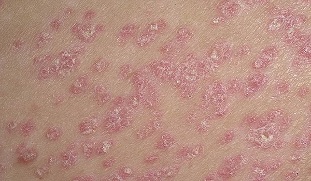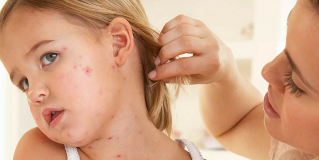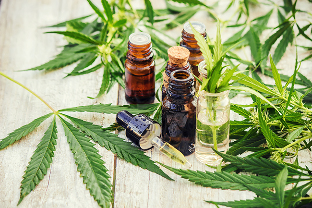The sooner people realize that she has psoriasis, and initiate appropriate treatment, the higher the chances that the disease is not running in the form. To accurately determine that you have the symptoms of this skin disease, you need to know, how to early stages of psoriasis. The disease is characterized by the features, showing at a glance the diagnosis. To learn more about them you can from the article: below has been given not only symptom descriptions, but a picture beginning stage of psoriasis.
How to start a psoriasis and what is this disease
Psoriasis is a skin inflammatory disease of nature, which is impossible to cure. Once encountered the disease, a person will become a victim of life.
The disease develops due to improper immune response of the organism to various internal and external stimuli. Causes of psoriasis are injury to the dermis, the violation of metabolic processes in the body, weak immune system, severe hypothermia, and many other reasons.
Symptoms of psoriasis are easily confused with a variety of skin rashes, because many of the skin disease accompanied by the appearance of red rash on body that itches and will flake. In order to distinguish the disease from other important to figure out how to psoriasis in the early stages.

The first stage of psoriasis involved in the formation of the various parts of the body psoriasis lesions are single or multiple brands. The body, arms, legs, face is characterized by a red or light red spots, which are often clearly defined boundaries. Clear boundaries can be seen in photos of psoriasis article.
How psoriasis
Many patients are interested in how to distinguish between psoriasis diseases, such as diathesis, allergic? You can answer this question exactly impossible. The most important feature is the location of the damage. Psoriatic plaque, in most cases, appear on areas of the body, unusual allergic rash. Psoriasis affects places which are subjected to mechanical friction, for example, clothes, shoes.
In order to understand the impact of psoriasis, should study in detail the stages of development of pathology.
The development stage of psoriasis
The disease is characterized by chronic, which includes periods of exacerbation and remission of symptoms. Decrease the manifestations of psoriasis usually occurs in the warm season under the influence of sunlight. In the winter, late autumn and early spring, the symptoms get worse.
There are three stages of the disease:
- Progressive (primary) stage of the psoriasis manifests itself in a typical rash a reddish-pink color, which appear on the skin. At the beginning of the disease the rash is small, its diameter is several millimeters, but the progression of the disease damage to the surface area increase, because combining separate lesions, one big on top. As a result, formed the so-called psoriatic plaques which are areas rounded damage, hot to the touch and slightly raised above the healthy skin. Around the affected areas, you may notice reddened inflamed areas. Skin rash, accompanied by itching. Its intensity varies in each case: some patients hardly suffer from the itching, while other skin psoriasis is itchy. Then start peeling the affected areas.
- After advancing stage begins a period of relative stability. New eruptions do not appear, the old dry, itching will be reduced.
- The final time is decreased by the amount of damage. The affected areas gradually separated from the previously formed shell or shield (depending on the variety of psoriasis), revealing a layer of smooth pink skin. In some cases, the site of the former lesions remain depigmented patches.
Symptoms early stages of psoriasis
The first signs of the disease are dependent on a variety of diseases. Below we look at how to identify psoriasis the early stages in different cases.
- Pustular psoriasis (exudative). Early stages of psoriasis, this type is characterized by the appearance on the skin small bubbles or blisters filled with clear or yellowish liquid. The disease usually begins abruptly, in some cases, the first signs of the disease may occur even a few hours. Eruptions are accompanied by local fever, headache, weakness, nausea. Blisters may itch, but combing them is not recommended. If the bubble is open, the cavity can get infected, which can lead to inflammation and suppuration. In addition, the place scratching may remain unsightly scars. With the development of the disease the number of lesions increase, the individual bubbles merge into large "lakes", the skin around them is very red and becomes hot. Over time, the blisters burst, and in their place to form the dry bark of red, pink or white.
- Vulgaris (plaque, normal, ordinary). This is the most common type of psoriasis. His first degree is easy to recognize: on the skin appear rounded reddish areas slightly raised above the healthy skin. The outer contour of these lesions are clearly visible: it has a red color due to the inflammatory process, which began about a rash. The diameter of the lesions in the early stages can vary from 1-several cm over time, they increase in size and merge adjacent areas of damage, forming a so-called psoriatic plaques. Gradually the surface of the plaques characteristic of plaque white or gray, resembling melted wax. Thanks to this analogy psoriatic plaques called "paraffin lakes". The plaque is a loose structure and can be easily scraped off, exposing the smooth skin under the red or pink color. Continue the procedure, it started dripping blood (this is the so-called phase of "blood dew"). With the development of the disease psoriasis patches of dry and eventually disappear. Below you can see the red or depigmented skin.
- Drip (teardrop-shaped). It is the second most common (while vulgar) type of the disease. Beginning stages of guttate psoriasis type is characterized by the appearance of the patient's body small (1-3 mm in diameter) lesions papules. They look like droplets of red. The first number of the papules, and their size can cause concern. However, as the disease progresses the rash becomes more and more over time, they can cover almost all of the body. Changes in the size of wheals: if at the beginning of the disease their diameter is 1-3 mm, then after a while they merge into a large spot size up to 10 cm in the initial stage of drop-type psoriasis papules are usually not inflamed, however, if they scratch, you can get infected: this will lead to inflammation and suppuration. Because the progression of the disease the pimples dry up, their tops are formed by dry white flakes.
- Seborrheic psoriasis the scalp. The defeat of the exposed scalp, the forehead, the neck, the neck, areas around the ears. The most important symptom of early stages of psoriasis of the scalp the appearance of oily white or yellow scales that resemble dandruff. The skin is scaly, itchy and scratchy, around the flakes red and inflamed. In some cases, the appearance of purulent crusts. The progressive stage of the disease can cause great physical and psychological discomfort. The hair of the patient is usually not affected: they do not fall out and has the same growth rate, which was observed before the disease. The defeat of the exposed exclusively the skin of the scalp.
- The palms and soles. This type of psoriasis affects the palms of the hands and fingers of the hands and soles of the feet of the patient. The rash may be presented with pustules and infiltrated plaques. Although the rest of the body of the patient is usually do not suffer from a psoriatic rash. Typical of early stages of psoriasis hands and feet – the presence of coarse, dry scales, which is reddish-pink skin that is prone to bleeding. Also, the disease at an early stage is often involved in the formation of deep, painful cracks.
- Psoriasis of the nail plate. The initial stage of this variety of the disease is characterized by the appearance of the nail plate with small depressions and grooves, the gradual thickening of the nail, small hematomas bleeding under the nail plate, change its color is white or yellow. The skin around the nail often becomes red and inflamed. Another option of the disease – the gradual separation of the nail from the nail bed.
- Of psoriatic arthritis. The disease can affect not only the skin but also the joints. Most often in the early stages of the disease occurs when the first signs of psoriasis, the skin. Joints change their shape, their flexion and extension becomes painful and problematic.
- Psoriasis of the mucous membranes. When the skin lesion, the disease can move to the mucous membranes. Most often, the loss of the exposed inner surface of the cheeks and genitals. Know early stage psoriatic lesions on the mucous membranes it is possible that the appearance of those of a white precipitate, which is surrounded by red inflamed areas.
Psoriasis in children: the early stages

The risk of this disease in childhood, because parents and even some doctors can mistake it for symptoms of symptoms of simple allergies, or atopic dermatitis. You can consider the characteristic features of psoriasis in children in the picture. The initial stage of the disease is somewhat different than the adult variant of the disease appears first in the skin folds and is involved in maceration of the Horny layer of the skin.
The first phase of psoriasis treatment
It is important to know exactly how to deal with the early stages of psoriasis on the face, elbows, head and other body parts to prevent disease progression. Depending on the type, location and intensity of damage, the doctor recommended the use of corticosteroids, sedatives and protivozudnam drugs. Also use creams, lotions, sprays. Their role is to soften the crust psoriasis, to nourish dry skin and fight inflammation.
Is there a cure for psoriasis the early stages at home folk remedies?

If the disease is at an early stage, treatment of folk ways you can give a positive result. However, in any case, you need to consult your doctor regarding the safety means.
Usually psoriasis treatment the early stages at home the use of birch tar, propolis, baking soda, juice of celandine, decoctions of herbs. The positive effect is the use of natural oils – sea buckthorn, olive, sunflower. You can also use essential oils – lavender, rosemary, tea tree. What are the treatments, it can be, bath, creams, compress, rinse, homemade lotions and creams.
























